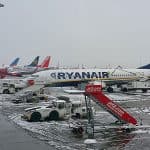
In the second part of this blog, we explore the effect on regional airports of the different airlines discussed in part 1.
How can regional airports cope with different airline operating models?
As all airline operating models are expanding and changing, as the numbers of passengers and flights rise year on year, regional airports must manage the balance of demands from each different type of airline in order to be successful.
As well as traditional short haul and low cost airlines, regional airports can cater for long haul flights with legacy and premium airlines. Aircraft are now able to fly the longer routes efficiently and economically with the introduction of the Boeing 787 and Airbus 350. Customer demand, too, has recognised the benefits of a wider range of flights been made available at regional airports, as more tickets are sold as direct routes. This has been very successful for Gatwick and Manchester.
This massive increasing demand, including the creation of more routes, makes regional airports and their needs much more complex.
They need to satisfy the demands and expectations of both passengers and airlines from such disparate sides of the business models. For example, passengers on Emirates flights require much more in terms of customer services than those of Flybe, and these needs can also be reflected in retail and food & beverage offerings.
AiQ’s knowledge can help regional airports manage the demands and differences of these different airline operating models. Our technology and tools, particularly our bespoke simulation modeling tool, TransvisionAiR™ allows passengers flows, capacity issues and different customer expectations to be mapped and modeled. Our clients can see any problems before they put changes in place and our knowledge can assist them in coming to solutions that work effectively and efficiently within the airport.
For example, we worked with Leeds Bradford Airport to conduct a whole terminal capacity analysis to facilitate their growing passenger and baggage traffic demand. We were able to utilise the existing terminal floorplate and provide accurate flow simulations of peak day traffic. Our recommendations enabled the client to increase capacity significantly and optimise their current operations, providing an enhanced passenger experience by improving overall passenger flows and maximising resource utilization. We were also able to ensure that passengers dwell time in retail shopping was maximized, increasing non-aeronautical revenue generation for the airport.
We are also working with Manchester Airport with their ambitious £1 billion Manchester Airport Transformation Programme to reconfigure Terminal 2, to become the airport’s primary terminal building, and improve the existing Terminal 3. They will also demolish Terminal 1, to build a new improved terminal. As specialists in airport capacity planning worldwide, AiQ Consulting provided recommendations on how to improve capacity between now and 2018, keeping investment costs to a minimum, and providing cost efficient options for how Manchester Airport can manage growth and the expansion of airlines. including new entrants and routes.
To find out more about the challenges airline business models can pose to regional airport and how our services, tools and knowledgeable team can help, contact us today

